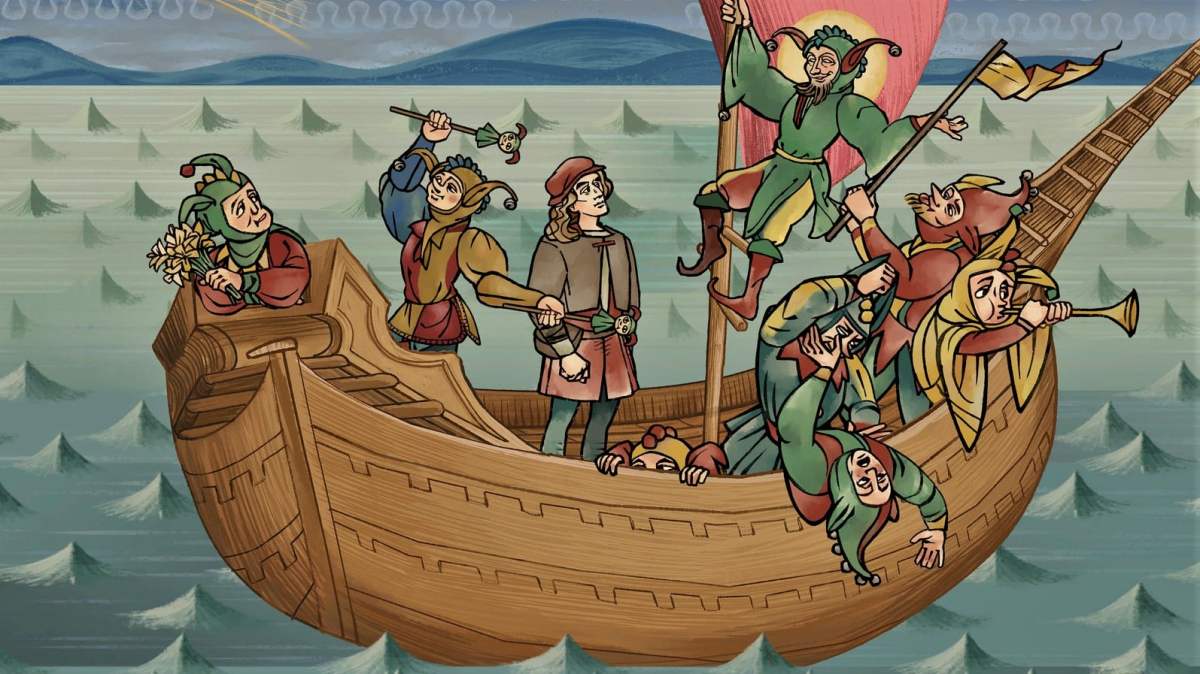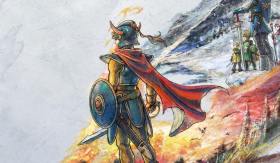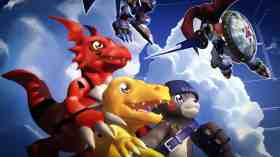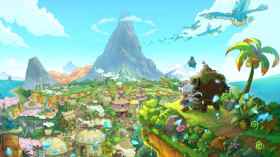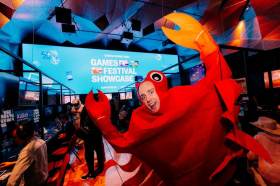Pentiment is one of 2022’s unlikely stories. Who would have thought a murder mystery narrative game set in 16th century Bavaria that involves feudal politics and Benedictine Monks, and fashioned in the visual style of medieval woodcuts and illuminated manuscripts, would be a notable game to be made and marketed by a major platform holder like Xbox? It’s a wonderful situation.
Developed by Obsidian Entertainment – famous for its sprawling, thoughtful, and mechanically dense role-playing games like Fallout: New Vegas, Pillars of Eternity and The Outer Worlds – Pentiment appeared to be the product of good timing.
The previously independent company was brought into Microsoft’s Xbox Game Studios family in 2018, reducing the studio’s pressure to consistently pursue publishing partners for backing. Microsoft wanted unique titles to help build an enticing offering for its Xbox Game Pass subscription service. Several Obsidian staff were coming off bigger projects, ready for a change of genre and pace. And longtime designer Josh Sawyer had a long-gestating idea primed to take advantage of all those moving pieces.
Sawyer found a partner in crime for the layered historical narrative of Pentiment in Hannah Kennedy, who had just come off the years-long development of The Outer Wilds as a concept artist. Excited by the idea of a 2D art-heavy game with such interesting themes and a more intimate scope, she became the game’s Art Director, getting far more involved with the processes of game making than she had before.
Kennedy spoke to GamesHub about this drastic whiplash in professional responsibilities at Obsidian.
‘It gives you a lot more agency to make creative choices, and it allows you to be a lot more flexible,’ she said. But she also remarked that it had its own challenges. ‘You definitely notice early on the moment where you’re thinking like, “Hmmm, anything that needs to get done for this game… one of us is doing it.”‘
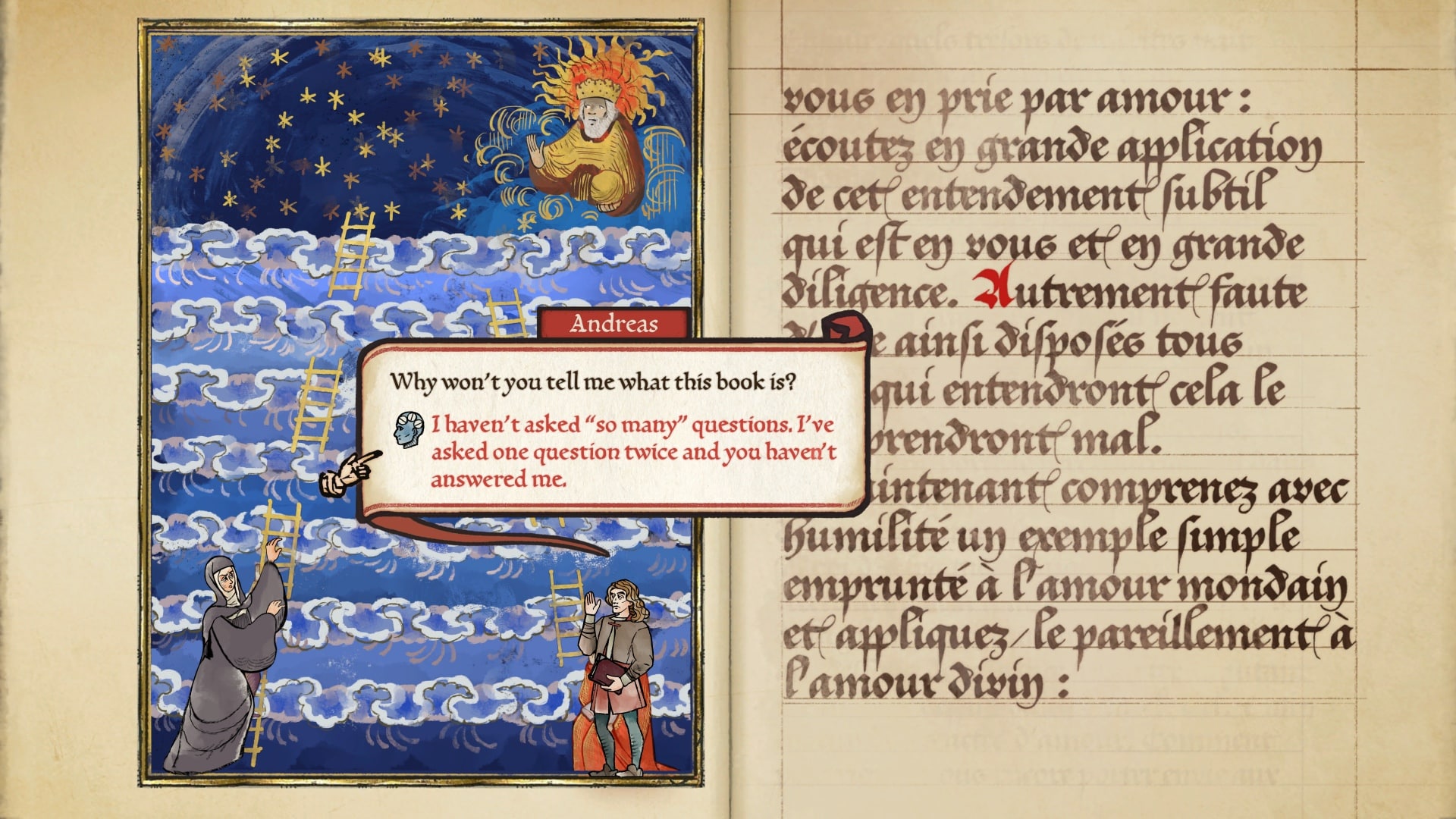
Kennedy also spoke very positively about how Pentiment’s very specific and unique formula was able to get off the ground with the blessing of Obsidian and Microsoft. Josh Sawyer previously told GamesHub that Pentiment would not exist without Xbox Game Pass.
‘We were lucky to have the opportunity to do this as an internal experiment, and not as something that we needed to pitch as an indie team to an external publisher … we were kind of like, “Hey, we know you want to let Josh take a chance. And we know that we have the resources to do this. And Obsidian is excited about continuing experimental projects as well as the big RPG that they continue to work on.”’
Kennedy described how she and her art team were able to take a relatively flexible and free-form approach in developing and iterating on the game’s striking art style and overall direction. Pentiment apparently started with a far more modern look, akin to animated films like Wolfwalkers. But the benefit of being able to work in such a small, tight-knit team was that they were able to try a myriad of options and continue to iterate, until they found something that felt right.
‘We got an initial idea and just said, “Let’s pop this in here and try it, play with it a little bit within the game space,” and then based on how that felt, would then adapt the art style and move forward.’
Not only that, it allowed the team to give themselves the time and breathing room to focus on the things that were really important to them: Like making sure they had a period-accurate depiction of food in the game.
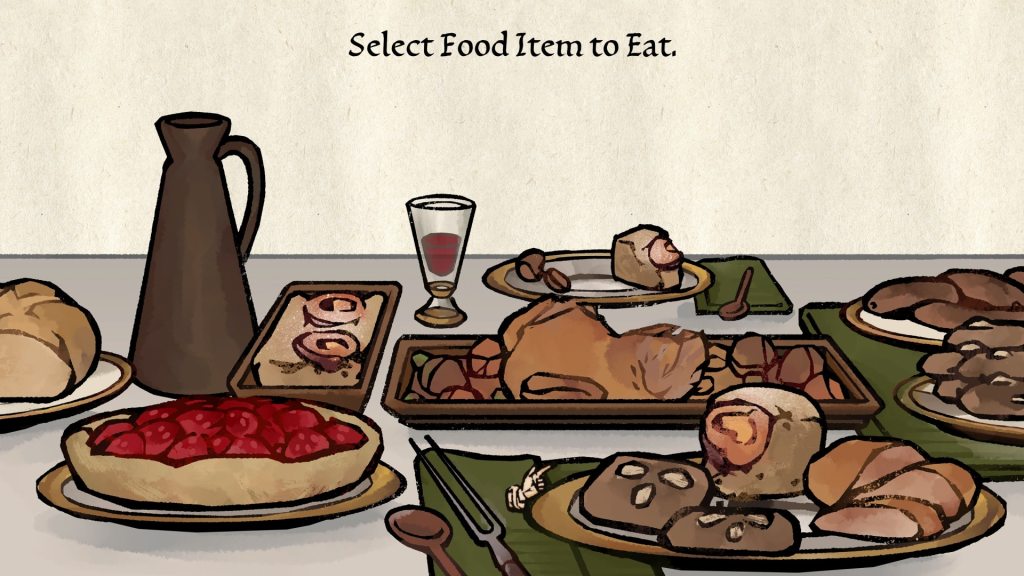
‘The amount of research that went into those meals is so much more than I think anyone will notice or appreciate … There’s so much that we learned about not just which food is native to there, but when it arrived,’ Kennedy said.
‘And it wasn’t just what the dish was and what it was named, but how it looked and how it was reflected differently in the plates of the people that were peasants, versus the plate of the people that were nobility, or even the middle class – all of the settings for the tables themselves. Really a lot of planning went into those.’
The full interview with Hannah Kennedy follows, where she talks in-depth about the path to her role as Art Director, the inception of Pentiment, the game’s art style, and all the moments of enjoyment and challenge faced along the way.
Interview with Pentiment Art Director, Hannah Kennedy
(The following interview has been edited for clarity and brevity)
GamesHub: Hannah, could you tell us a little bit about your professional background, the work that led you to Obsidian, and eventually to Pentiment?
Hannah Kennedy: Yeah, absolutely. I had a path that was all sort of windy, but connected. Immediately after my college art training – my background was an illustration degree – I was working as an illustrator. I didn’t have a specific platform in mind, really, I just knew I wanted to make story-telling, 2D art, so I was freelancing a lot.
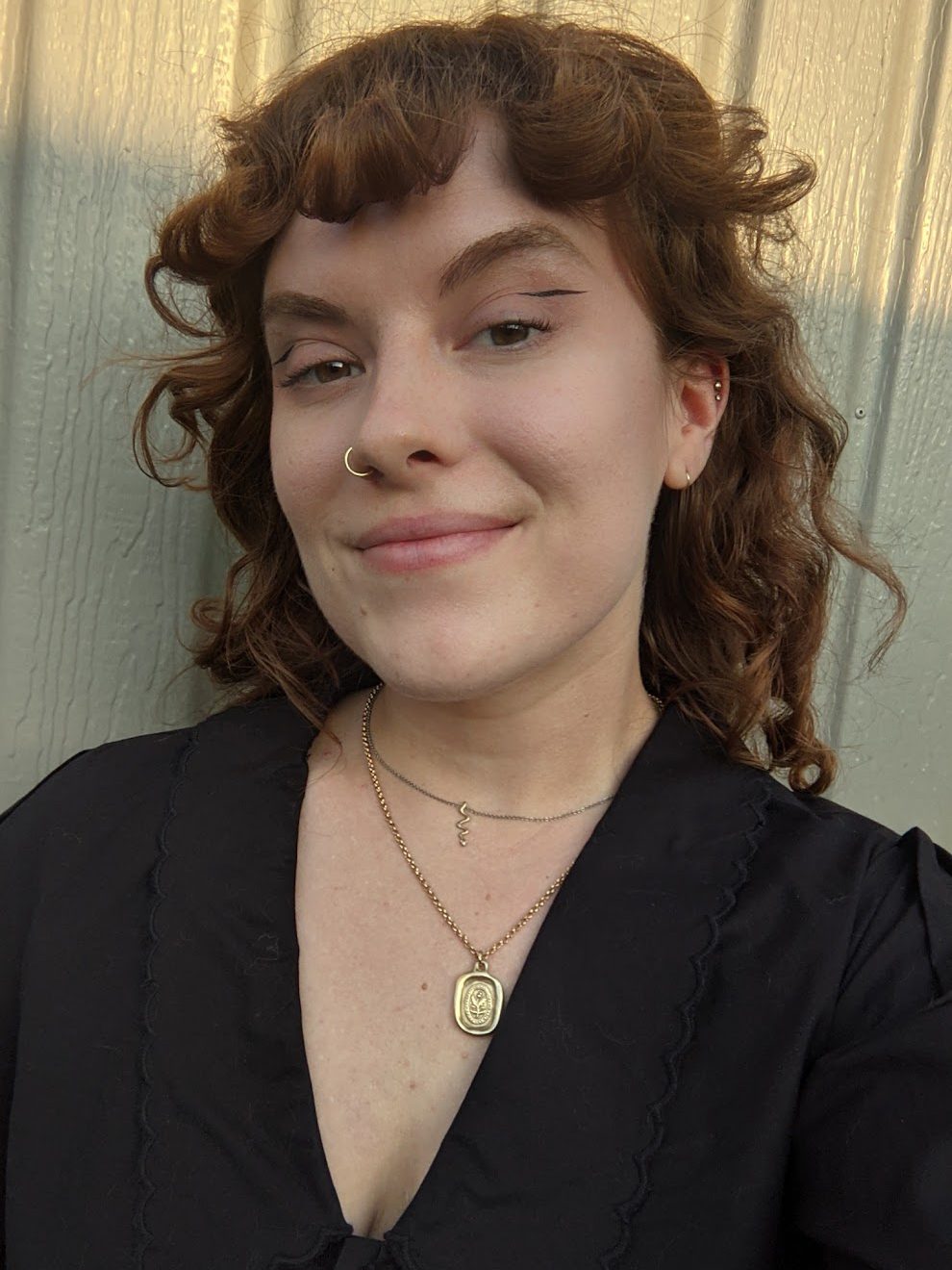
I ended up working with some clients within the tabletop gaming community, and one of those clients that I was working for consistently was Pathfinder. Obsidian was, at the time that I applied, working on a digital port of a Pathfinder game. So I landed at the company in a position where I was there to make art for a digital games platform, within an IP that I had already worked with before for print – which was just coincidental, but really to my advantage at that time.
So that was a really unique and nice opportunity for me – this bridge game to work on between those two worlds. From there, I transitioned to The Outer Worlds project, which I was on pretty early, and got to be a part of developing a much larger first-person RPG. It was science fiction and space, which was all very different from what I had been doing before.
Then I eventually transitioned onto Pentiment – and the whiplash between genres was pretty crazy.
But it’s one of the things I really enjoy about working as an in-house employee. You have this opportunity to jump from a wrapped project to then see what else is going on. Is that appealing to you? Is that of interest to you?
And the wider you allow that spectrum to be for yourself, the more things you can say ‘yes’ to, you get to kind of fling back and forth between different genre projects like that.
I imagine the whiplash is not only from the difference in genre, but in going from such a huge project like The Outer Worlds to something very small. What were the pros and cons of that? Were there any cons?
There were cons, but I won’t call them exclusively cons. There are things that are more difficult challenges on a smaller project.
One of the things definitely is that my role was a little different between the two. In The Outer Worlds, I was working as a concept artist. I was within a team of other concept artists, and we were all sort of underneath the Art Director and just working in a pocket together. We had a couple that were really veteran Concept Artists at the time, and then two, including myself, that were pretty green.

So we had this space where we had our bubble, within this idea of what this production was. But we were, you know, being given our prompts for what needed to be made somewhat in isolation. When the team is that big, when it’s a 150-200 person team, you just have to kind of have your blinders on a little bit more and be thinking, ‘I’m doing the best I can at this one facet of the game.’ You’re not always able to think about it within terms of the larger whole when the project’s that big.
So on a game like Pentiment – I think we had like 15 people working at once at our widest breadth. Very small. And for the first, really long portion of the game’s development at the beginning, it was just me as the 2D artist and the lead animator that were doing everything 2D that needed to get into the game. So that gives you a lot more agency to make creative choices, and it allows you to be a lot more flexible. If you have an idea, you’re like, ‘I want to try this,’ and then you’re like, ‘Okay, nix that, that’s not working, I want to try this.’ You don’t have to run through a series of approvals and stuff.
But you definitely notice early on the moment where you’re thinking like, ‘Hmmm, anything that needs to get done for this game… one of us is doing it.’
So there are things that we were used to having, like, ‘Oh, we’ll go to this department and ask them for it.’ UI (User Interface) is a great example – a team of our size wasn’t big enough to have a bespoke UI designer. So we balanced it back and forth between choices that the lead programmer made for gameplay flow, choices that I would make – even though I don’t consider myself a UI specialist and I wouldn’t choose to do it on a larger team. That’s its whole, own, very deep skill set.
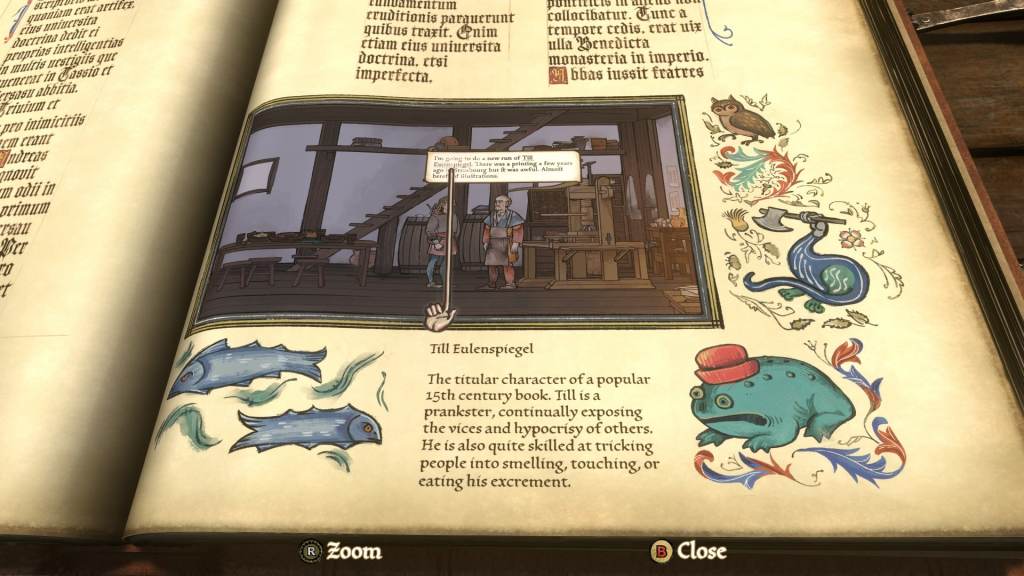
But with a smaller size team, you kind of have to set something up as best you can and then tap in and ask an external person that specializes and say, ‘Hey, can you review and give us suggestions?’
I hear a lot of similar stories of people who begin a career in games starting off as one thing, and then all of a sudden having to actually learn brand new things and dramatically expand their toolkit. What were some of the things that you personally got your hands dirty with, that you hadn’t done before Pentiment?
Prior to this game, I was for the most part in concept art. The pipeline for that is usually making a design or a blueprint to pass to other artists to make the asset, that then gets imported into the game.
So everything that was art that needed to be a part of the game in Pentiment – that was suddenly on us to learn those import pipelines, learn how to most effectively format them for performance reasons, and have those things in mind when we’re the designing the art – which just wasn’t a part of what I had been thinking about prior to that.
And eventually, when I had a Junior Artist that was added to the project working under me, a skillset I had to expand was managing and being in a leadership position to another person that was working and learning that whole process.

I was very fortunate to have the opportunity to do that on a small project first – I think people often get put into those positions potentially sooner than they would’ve thought was ideal, because the need was there, and then they can really underperform or become overwhelmed. There’s a whole other skill set involved in management, and also a specialisation, and then there’s becoming a senior in that specialisation.
We were working on the game for a pretty short amount of time before the pandemic hit and we all transitioned to work from home – so we had to really stretch our communication muscles at that point. I was learning how to be a manager and also learning how to be a manager remotely at the same time, which I think helped.
From the outside, Pentiment’s art is so strong, it seems like a game that was just born out of an idea to try and tackle a particular style. Like, ‘Oh this art is great, let’s make a game around it!’ Was that actually the case, or was the story a bit different?
It was a bit different. The origin of this game has always been something that [Director and Narrative Designer] Josh Sawyer has been chewing on for a long time. I think what was most critical to him was the narrative structure of it.
He had a story in mind based on inspirations he really loved, and wanted to be able to tell a story within a game in that space. So he had a historical context – knowing that it was a history game, knowing that it was a murder – but not necessarily what format that would be. He didn’t know if it would look more like an RPG that he had worked on before, or if he wanted to try something new.
There was a transition point for him where he had picked up quite a few narrative adventure games, which was a genre he just hadn’t really thought about being appropriate for the idea he had.
Some examples were Night in the Woods and Oxenfree. Those kinds of games changed his perspective. Like, ‘Whoa, what if this was in a 2D space, so that we could really focus on the story and less on the mechanics, less on the systems that RPGs can get bogged down in?’
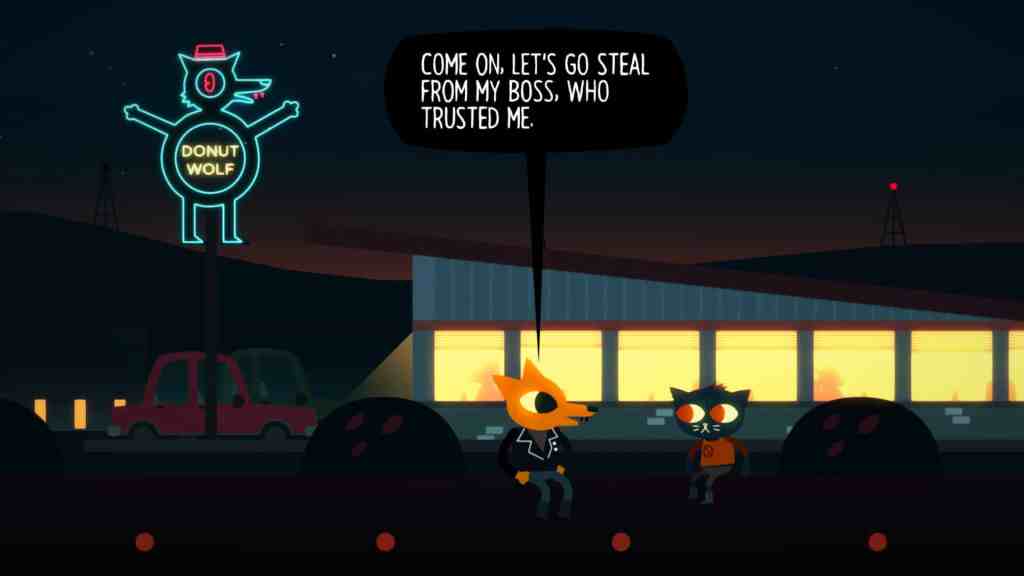
And a side effect of that was like, ‘Whoa, that would allow us to do a lot of really cool things with the art.’
That’s when he came to me and pitched the idea of ‘Hey, that thing I’ve talked about a few times before… what if it was 2D? It could kinda look like the illustrations of the art at the time!’ And I was just like, “YES!”
At that point, I was just excited about that idea of, basically, a really illustrative game at the scope, and within the themes that he wanted to make.
So you didn’t particularly have any specific knowledge about this period, but Josh’s infectious eagerness got you excited about the project?
Yeah, it was a mixture of that. I did know about art history from the region in isolation – just with traditional art school training, you focus on Europe and all that. And of course, this is a story about an artist.
But when it comes to the social context, and all of the tensions that are focused on that region and the history and the tensions between the peasants and the feudal lords and stuff… that was the stuff that he really got me hooked on.
‘Yeah, let’s talk about Benedictine monks!’ And I was like, (nervously) ‘Oh, boy, the gamers will love this.’ But he sold me on the idea of how all those aspects can weave together and present this really interesting space for a story.
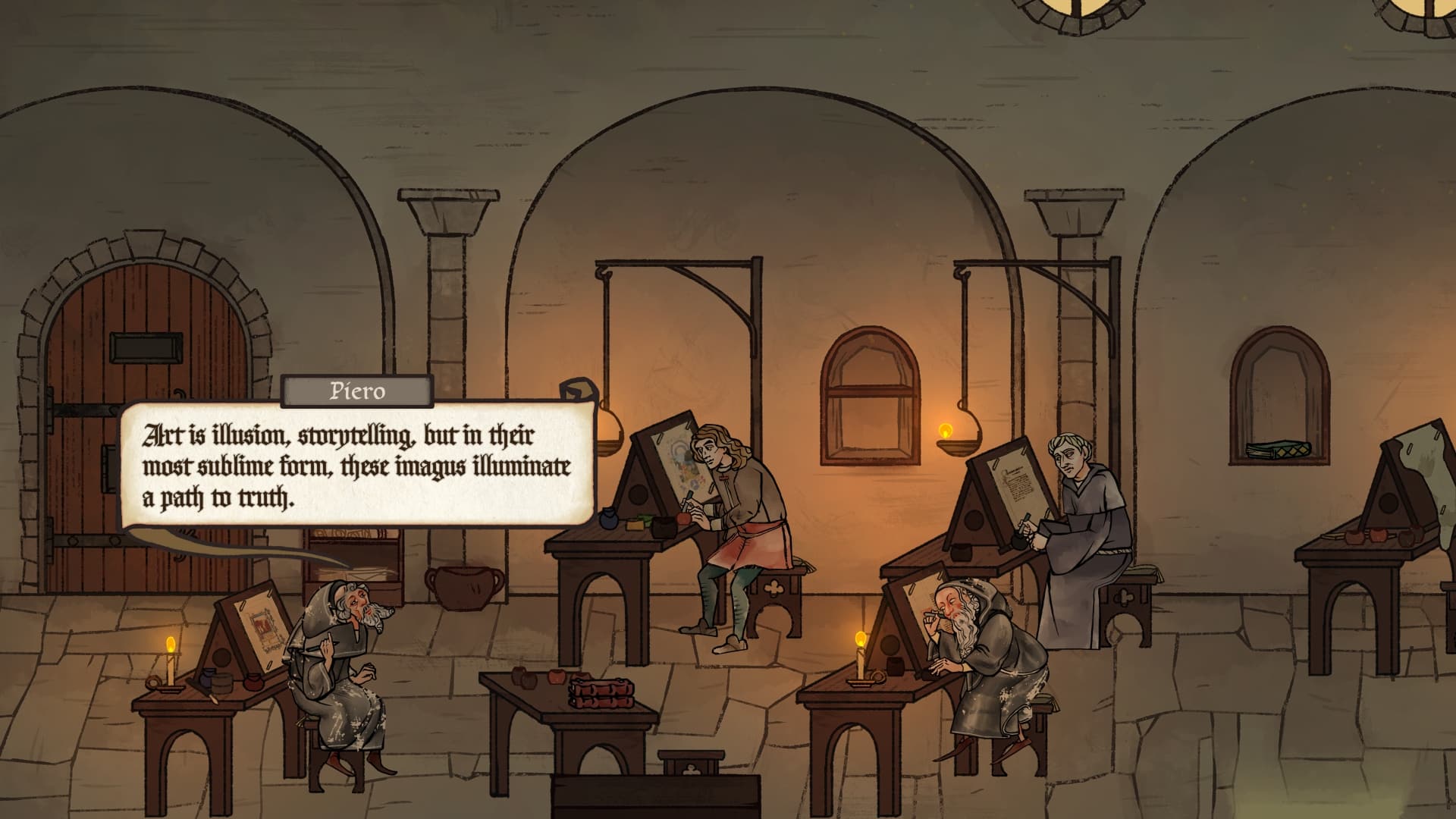
We’d also use parallel examples – we would watch inspiration media together as a team early on, and one of the anchor ones was always The Name of the Rose by Umberto Eco – we watched a few adaptations of that – as well as Andrei Rublev (1966), which was a film that I had seen before and really liked. I was like, ‘Oh, I get what you’re doing. I understand the mood and themes you want to push a little bit more.’
Given that Pentiment is such a unique thing, once you two were on board, was it hard to get other people on the team to get excited about it?
No, because we had a bubble of pretty veteran people that were all looking for an opportunity to be on a small experimental project. Even if you weren’t specifically enchanted by that genre before Josh sold you on it, there was a team that has worked together and was pretty excited to pick something like that up.
Once we had our core pocket of people within Obsidian that bunched together to make this team’s foundation, it was less difficult to sell the new people that we picked up with that base – and also just because we were lucky to have the opportunity to do this as an internal experiment, and not as something that we needed to pitch as an indie team to an external publisher, or whatever.
I think we do recognize how much fewer hurdles we hit in the process. We didn’t need to convince people like, ‘Hey, this art monk game will sell really well!’ every step of the way.
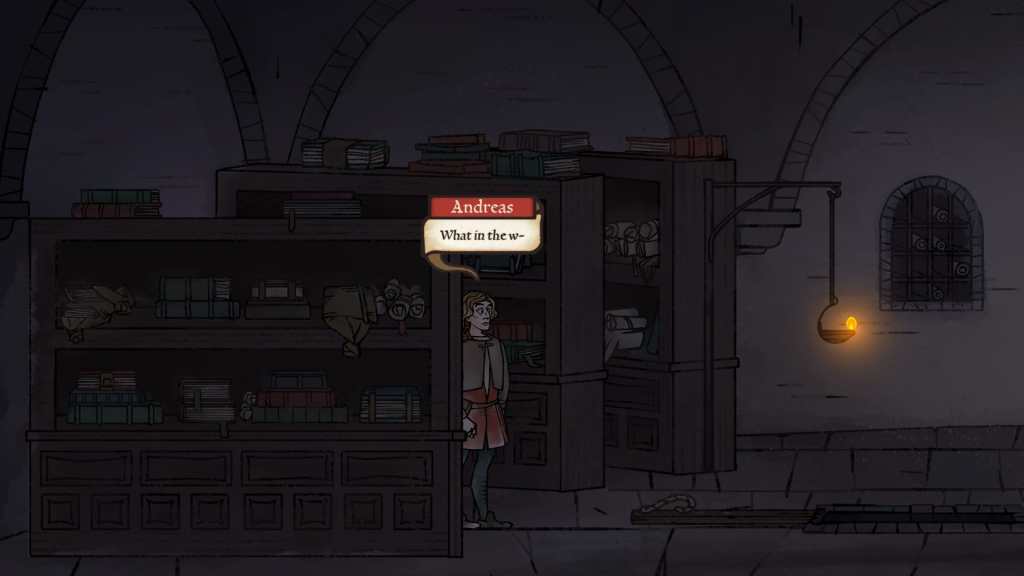
We were kind of like, ‘Hey, we know you want to let Josh take a chance. And we know that we have the resources to do this. And Obsidian is excited about continuing experimental projects as well as the big RPG that they continue to work on.’ So this was one that kind of surprisingly came together pretty seamlessly at the beginning.
What were some of the processes and nuances in developing a style based on something so symbolic, but also making sure that Pentiment had its own visual identity, its own sort of personality, and just making sure everything worked well for a game?
We had experiments at the very beginning that were sort of more modern animation-based, looking at Cartoon Saloon [The Secret of Kells, Wolfwalkers] and how they did stylised pieces based on illuminated manuscripts.
And then we also considered a more loyal-to-the-source-material type of look, and just weighed the pros and cons of that through some experimentation early.
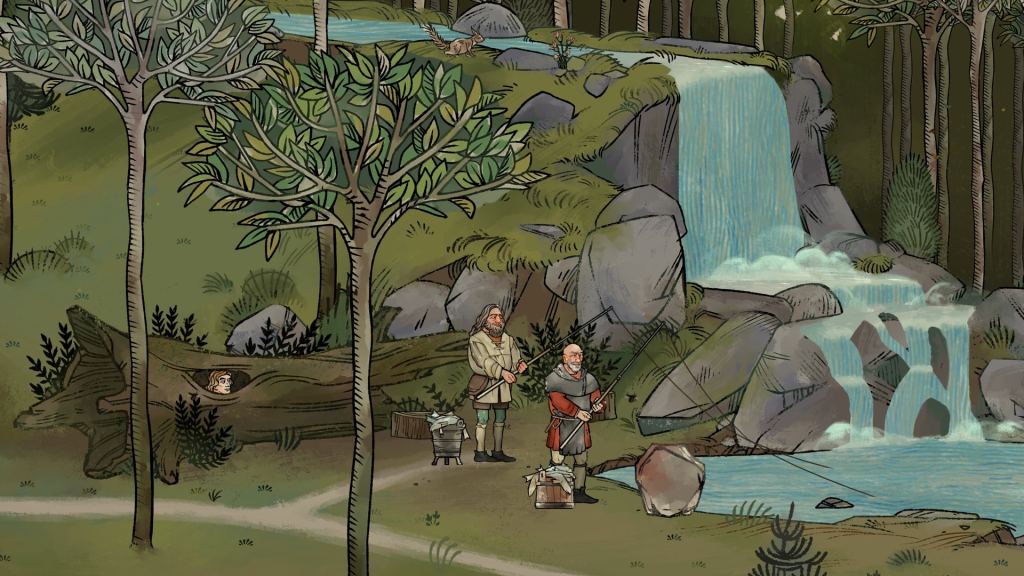
I think there’s something really enchanting about the idea of it looking exactly like the material. But what challenges would that present? And I think clarity and visibility are some really big ones, unless it’s just a ‘point-and-click engagement with interactables on a screen.’
Once you have to navigate through the space, it becomes a lot more critical to make that feel comfortable and make it feel clear that you understand where you are within a scene. So a lot of the creative decisions were informed by what we wanted the gameplay to feel like, and what we wanted to be able to do within that space.
We would take those things into consideration and change some things about how our landscapes were structured when we were looking at these books, or looking at these woodcuts. They’re all sort of like a crazy, flattened perspective, vertically stacked and stuff, and that looks great. But as soon as you try to think about it like, ‘How would I walk through this as the player?’ Does the little guy shrink because he goes back, or does he stay the same? What would that look like in practice?’
So we would try a certain combination of things – ‘Let’s have a lot of baked-in textures and make it really crunchy with thin lines.’ And we thought that was confusing or we couldn’t recycle it. So then that would inform us to be like, ‘Let’s simplify this, make the broad sweeping areas of the landscape flatter so that we can have things on top of them, and it reads better.’
And then with our characters, there’s a bunch of different art styles within this time period that are both loyal to the region and the setting timelines. But those aren’t all necessarily as practical as setting up a 2D rig for the skeleton of a character.
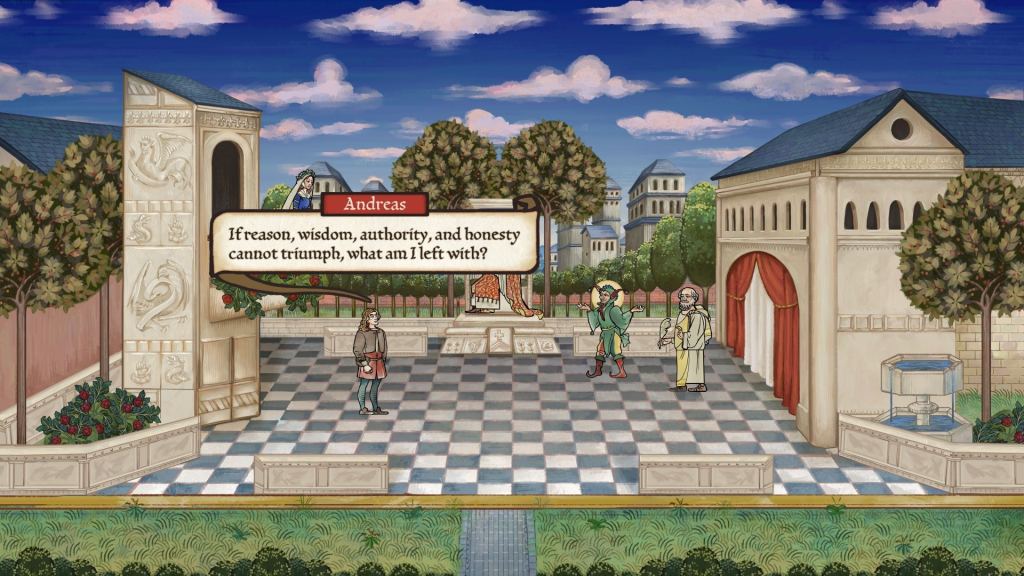
And one example of something we were conscious of, is if we wanted to focus on the more painterly aspects of art of this time, there is the potential that people will see that and immediately make the association with, like, Monty Python characters. And that’s fine. But that is something that we recognized people would see and feel when they see that.
So we had some stuff where early characters had textures baked into the inside of the fill art on them, and it just ended up feeling too puppetey and was making it feel like something that we knew would be distracting within a current cultural lens.
We went with a more flattened woodcut style overall for the characters in most instances, the exception being in Act I and I think in Act II, some of our very old characters do look more like the illuminated style to just present a fun little contrast there for people who notice.
But we didn’t necessarily set out with that in mind initially. We got an initial idea and just said, ‘Let’s pop this in here and try it, play with it a little bit within the game space.’ And then based off of how that felt, would then adapt the art style and move forward. And it was just rinse and repeat of that over and over again.
Did you ever consider going out and trying to recreate the style physically in real-life, like using animal skin and quills?
I did do some lino cuts – I actually have done printmaking before and had done woodblock printing. It had been a while, so getting back into this project I did some bricks again on my own, but that was all still with modern ink and paper. The process is very similar, just with different materials.
I know that our sound designer did actually go out and purchase real vellum [animal skin parchment], and real quills and stuff to get materials for sound recording. I think that’s fun.
What’s one minor detail about your game that you personally really love, you don’t think anyone’s going to notice?
One thing that comes to mind – and this wasn’t work that I contributed, this was work that our other concept artists Soojin [Paek] did – but we have many game sequences that are overlaid over conversations where you’re eating a meal with people.
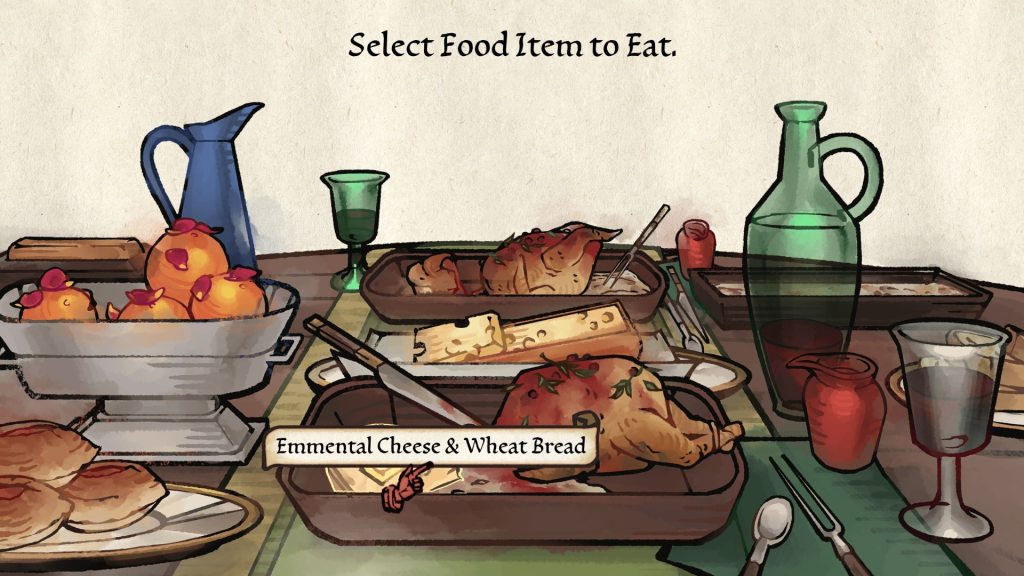
And the amount of research that went into those meals is so much more than I think anyone will notice or appreciate. Because we had to consider food from a region that we’re not native from, so we had to do some research on what that food is. Then we had to do research on how they made it then with the materials that they had at the time.
There’s so much that we learned about not just which food is native to there, but when it arrived – they did not have potatoes, absolutely not. There’s a questionable clarity on orange carrots, if they were there or not.
And so it wasn’t just what the dish was and what it was named, but how it looked and how it was reflected differently in the plates of the people that were peasants, versus the plate of the people that were nobility, or even the middle class – all of the settings for the tables themselves. Really a lot of planning went into those and I think that that’s great.
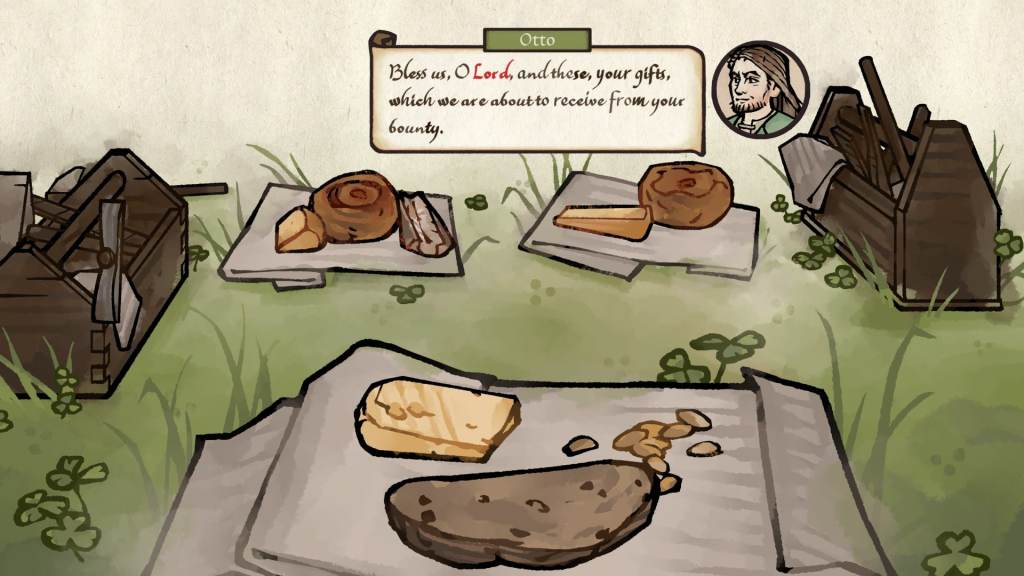
For you personally, especially given that Pentiment feels like Josh’s very specific dream come true, what are some of your dream projects in terms of art?
Well, this was very close to it for me. Like, I didn’t have a theme in mind, but when I think about what a dream game would be, it’s not necessarily about a specific story.
Getting to have a really experimental art space where a lot of the art that I’m making for the game is actually shipped in the game itself, and isn’t just groundwork being laid for artists to work off – which is great, but like, it’s a whole different thing when you’re actually making the asset art for the game.
So it was that, and it was the ability to do that under someone who was writing a story that they were extremely passionate about. Which is exciting to me, because that kind of just opens up the space where it’s like, ‘Great, I get to focus on the art, you get that side bud, I trust you,’ and then move forward with getting to focus all of my energy on the creative side of things.
I love having someone else taking care of the aspects of game making that are not necessarily what I love about it.
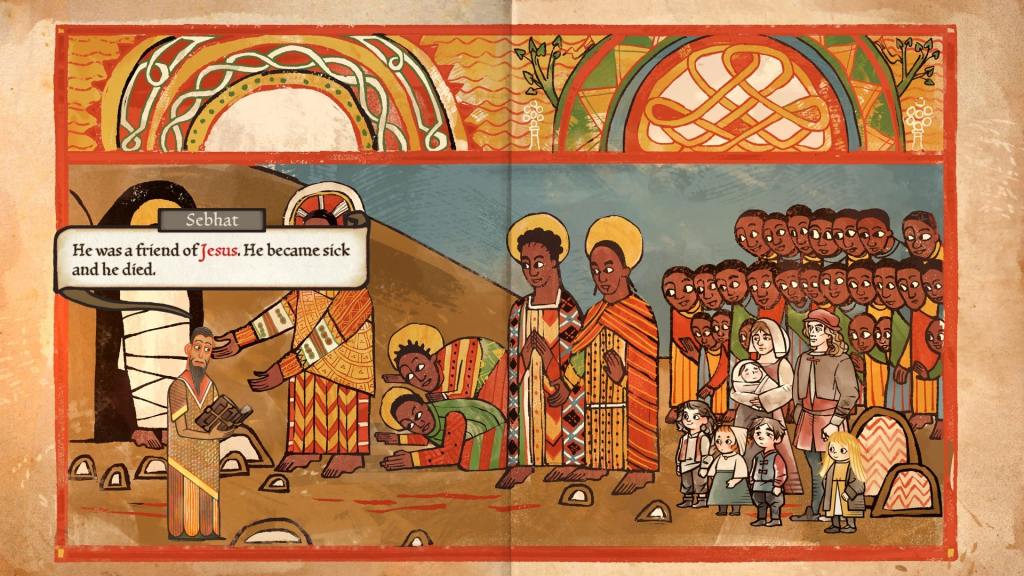
Another thing I get really excited about with games specifically is that I think in the RPG space especially, people become very attached to characters and stories that are being told through specific characters and minds that people, you know, develop parasocial relationships with in a great way – the way that the fan community interacts with characters within the game space.
We have a ton of characters in this game, and they all have their own little stories, so I think it’ll be very easy for a player who spends even a little time in the game to kind of get favorites really quickly. And I love that dynamic. I love getting to design characters. And there’s a lot of psychology within that space, and we just got to make a ton. So that was really exciting.
And I think overall, another thing that made me really excited about this project is the shape that the industry is in now and moving forward feels like we are at a point of saturation, where developers as a whole… there isn’t really the pressure of like, ‘Oh, we know what players want, so let’s make more of that.’
I get really excited by any project that is just something that seems like there isn’t an exact parallel to already within the industry. Because I think that means automatically, there’ll be someone out there for it. And if the team is excited about it, and wants to have that space to be able to flex something that they’re really passionate about, then I think people will find those projects and get really excited about them.
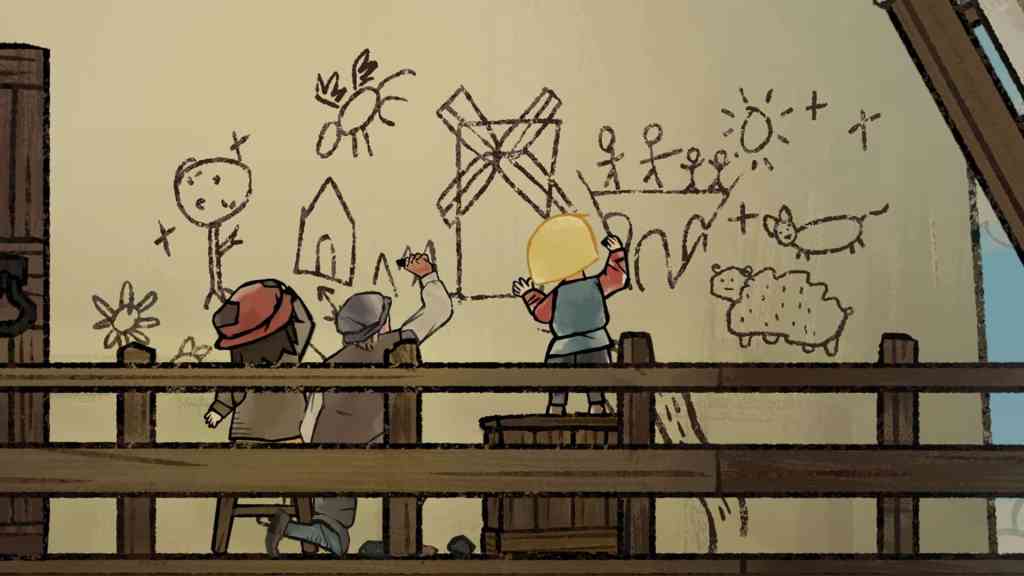
People think they want more of what they already know they like, but the idea that they could find something new – where they had no idea that it was even their jam – that’s really exciting to me.
I think I’d love in the future to jump back and forth between things where it’s like, ‘Ah, yes, the classic sort of structure, let’s do this again,’ and then when I see other projects making something weird, or other teams that are doing something unexpected, and they seem really excited about it… that’s what gets me really passionate within the game space both as a player of games and on the making games side.
Pentiment is available on PC, Xbox One, and Xbox Series X/S. It’s also available as part of the Xbox Game Pass subscription service.
